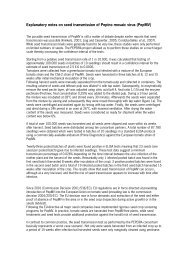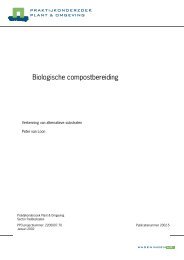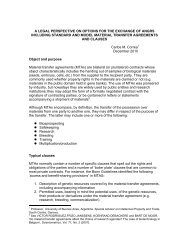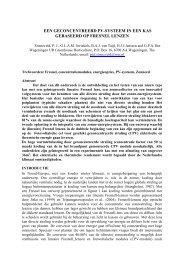Oil spill dispersant article
Oil spill dispersant article
Oil spill dispersant article
You also want an ePaper? Increase the reach of your titles
YUMPU automatically turns print PDFs into web optimized ePapers that Google loves.
THE DISPERSANT DEBATE<br />
The debate about the use of oil <strong>spill</strong> <strong>dispersant</strong>s<br />
has been in progress for over 30 years.<br />
During this time there have been several signifi<br />
cant events that have formed opinions. The<br />
fi rst major use of detergents (true oil <strong>spill</strong> <strong>dispersant</strong>s<br />
had not been invented at that time)<br />
was at the Torrey Canyon oil <strong>spill</strong> in 1967.<br />
CASE STUDY 1<br />
The Torrey Canyon oil <strong>spill</strong> - first use<br />
of detergents on a massive scale<br />
The Torrey Canyon was bound for Milford<br />
Haven in Wales on a voyage from the Persian<br />
Gulf. The ship was carrying 117,000 tonnes of<br />
Kuwait crude oil when she grounded on the<br />
Seven Stones (15 miles west of Land’s End)<br />
on the 18th March 1967. Approximately 30,000<br />
tonnes of oil escaped in the first 60 hours.. A<br />
large oil slick, about 18 to 20 miles long, started<br />
to drift along the English Channel. Within 12<br />
hours the Royal Navy started spraying the oil<br />
at sea with detergents.Within three days a<br />
total of approximately 75 tonnes of detergents<br />
had been sprayed onto the <strong>spill</strong>ed oil at sea.<br />
Six days after the grounding, another 18,000<br />
tonnes of oil was released and was blown<br />
directly onto the Cornish coast. On Sunday<br />
26th March, the Torrey Canyon broke her back<br />
and another 40,000 - 50,000 tonnes of oil was<br />
released into the sea. This drifted southwards,<br />
towards France. The Royal Air Force bombed<br />
the ship in an attempt to burn off the remaining<br />
oil. This was not successful. Nearly 3,500<br />
tonnes of detergent was sprayed onto the oil<br />
at sea in an attempt to disperse it. The shorelines<br />
of Cornwall, Guernsey and Brittany were<br />
contaminated with large amounts of emulsifi ed<br />
oil. The attempts to clean the shoreline in the<br />
UK used massive amounts of the same detergents<br />
that had been sprayed at sea. Approximately<br />
10,000 tonnes of detergents were used<br />
After the Torrey Canyon<br />
To some people, the Torrey Canyon experience<br />
was (and still is, in some people’s minds)<br />
positive proof that the use of detergents was<br />
not an appropriate oil <strong>spill</strong> response method.<br />
The opinion that “the cure was worse than<br />
the disease” was voiced.<br />
to treat the estimated 14,000 tonnes of oil that<br />
came ashore in Cornwall.<br />
Effects<br />
A study of the effects of the oil pollution from<br />
the Torrey Canyon found that the oil at sea<br />
had caused a large loss of sea birds, but few<br />
other effects. The intertidal areas were the<br />
worst affected; rocks were denuded of limpets<br />
and algae was killed in extensive areas. From<br />
a comparison of the shoreline areas where<br />
detergents had been used with other areas<br />
that were subject to only oil, it rapidly became<br />
apparent that the greatest amount of ecological<br />
damage had been caused by the detergents.<br />
Limpets that were apparently unaffected by the<br />
oil (they recovered from being covered in oil<br />
and they grazed on oiled rocks) were killed<br />
by detergent spraying. Subsequent studies over<br />
many years confi rmed that the type of detergents<br />
used at the Torrey Canyon incident had<br />
had a far more damaging effects than the oil.<br />
The UK authorities took a different view. They<br />
considered that dispersing the oil was a valid<br />
oil <strong>spill</strong> response strategy. However, the detergents<br />
used at the Torrey Canyon were far<br />
too toxic, not effective enough, had not been<br />
applied in the most effective way and there<br />
13

















